Images of the Modern Vampire
Images of the Modern Vampire
The Hip and the Atavistic
Edited by Barbara Brodman and James E. Doan

Fairleigh Dickinson University Press
Madison Teaneck
Published by Fairleigh Dickinson University Press
Co-published with The Rowman & Littlefield Publishing Group, Inc.
4501 Forbes Boulevard, Suite 200, Lanham, Maryland 20706
www.rowman.com
10 Thornbury Road, Plymouth PL6 7PP, United Kingdom
Copyright 2013 by Rowman & Littlefield Publishers, Inc.
All rights reserved . No part of this book may be reproduced in any form or by any electronic or mechanical means, including information storage and retrieval systems, without written permission from the publisher, except by a reviewer who may quote passages in a review.
British Library Cataloguing in Publication Information Available
Library of Congress Cataloging-in-Publication Data
Images of the modern vampire : the hip and the atavistic / edited by Barbara Brodman and James E. Doan.
pages cm
Includes bibliographical references and index.
ISBN 978-1-61147-582-1 (cloth : alk. paper) ISBN 978-1-61147-583-8 (electronic) 1. Vampires. I. Brodman, Barbara, editor of compilation. II. Doan, James E., editor of compilation.
GR830.V3I58 2013
398'.45dc23 2013025471
 The paper used in this publication meets the minimum requirements of American National Standard for Information SciencesPermanence of Paper for Printed Library Materials, ANSI/NISO Z39.48-1992.
The paper used in this publication meets the minimum requirements of American National Standard for Information SciencesPermanence of Paper for Printed Library Materials, ANSI/NISO Z39.48-1992.
Printed in the United States of America
Acknowledgments
T his book, and its predecessor The Universal Vampire: Origins and Evolution of a Legend , is the product of a vampires-in-the-mist experience that began in July 2006, when we both presented papers at the Conference on Icons and Iconoclasts at the University of Aberdeen, Scotland. Neither paper we presented thenBrodmans on the evolution of the 17th-century Don Juan legend and Doans on Shakespeares use of history in his playsdealt specifically with the vampire. Over a few pints of stout, we began discussing parallels between Don Juan and the Byronic vampire anti-hero, which led to a paper, From the Sensual to the Damned: Legends of Don Juan and the Vampire, that we subsequently presented at the 2008 National Popular Culture & American Culture Associations Conference in San Francisco. The topic stuck and led us to develop a book project that would explore in detail the origins and evolution of the legend.
We took our proposal to the International Conference on Vampires: Myths of the Past and the Future at the University of London in November 2011, gave out calls for papers, and were overwhelmed by the quality and quantity of the essays we received. We circulated additional calls for papers with equally impressive results, leading to the production of two impressive volumes on the Universal Vampire theme.
We would like to thank those friends and colleagues whose assistance made these books possible. Harry Keyishian, director of Fairleigh Dickinson University Press, and Brooke Bures, associate editor for the Rowman & Littlefield Publishing Group, made the challenges of turning an idea into a book easy and enjoyable. Ruth Nemire set us on the right course. At Nova Southeastern University, Dean Don Rosenblum and Director of Humanities Marlisa Santos gave us institutional support without which completion of this project would have been impossible. And our dear friend and colleague Suzanne Ferriss helped us in more ways than we can express, sharing her vast publishing experience with us unreservedly.
Introduction
Barbara Brodman and James E. Doan
I n The Universal Vampire : Origins and Evolution of a Legend , we discussed the development of the vampire in the West from the early Norse draugr figure to the medieval European revenant and ultimately to Dracula, who first appeared as a vampire in Anglo-Irish Bram Stokers novel Dracula , published in 1897. We also looked at the non-Western vampire in Native American and Mesoamerican traditions, Asian and Russian vampires in popular culture, and the vampire in contemporary novels, film and television. We continue the multicultural and multigeneric discussion in this volume, which traces the development of the postmodern vampire in films ranging from Shadow of a Doubt to Blade , The Wisdom of Crocodiles and Interview with the Vampire ; the male and female vampires in the Twilight films, Sookie Stackhouse novels and True Blood television series; the vampire in African American womens fiction, Anne Rices novels and the post-apocalyptic I Am Legend ; and the vampires in Japanese anime. Finally, we present a new Irish Dracula play, adapted from the novel and set in 1888.
Part 1, The Vampire in Modern Film, traces the development of the film vampire from its earliest depiction in Murnaus 1922 Nosferatu to the iconic Shadow of a Doubt (1943), though in the latter case more figurative than literal. One theme that links the two is the perverse sexuality revealed in Count Orlocks (and in the novel Draculas) relationship with Mina, and Uncle Charlies with his niece Charlie in the Hitchcock film, as explored in Victoria Williamss essay Reflecting Dracula : The Un-dead in Alfred Hitchcocks Shadow of a Doubt . Similarly, we see this perversity in the degenerate Bulgarian vampire, Steven Grlscz, in relation to his victim, Anne Levels, in The Wisdom of Crocodiles (1998). In this film and others from its era, such as The Hunger (1983), we note that the 19th-century vampire has a difficult time adapting to its un-dead life in the 20th century. As Murray Leeder suggests in the conclusion to his essay A Species of One: The Atavistic Vampire from Dracula to The Wisdom of Crocodiles , Perhaps we can ultimately understand Steven Grlscz as being what the atavistic vampire becomes when sapped of that broader fin-de-sicle context: a sickly creature out of his proper time, a pathetic and anachronistic species of one. Melissa Olsons essay Dracula the Anti-Christ: New Resurrection of an Immortal Prejudice explores the inherent anti-Semitism found in Dracula , where the count is described with hooked nose, shifty eyes, massive eyebrows and bushy hair. She sees this transferred to the film Dracula 2000 , where he is portrayed as a reincarnation of Judas Iscariot and thus the ultimate anti-Christ, paving the way for new interpretations of the vampire. This section concludes with Simon Bacons Eat Me! The Morality of Hunger in Vampiric Cuisine, which demonstrates that we are not so much what we eat, but what we are eaten by. By using Emmanuel Levinass notion of the possibility of transcendence through the ethical encounter with the hungry other, he shows that our relationship with the vampire becomes of vital importance. The un-dead are no longer our dark reflections from hell but are inextricably linked to our aspirations to enter heaven. Referring to film vampires such as Twilight s Cullen Family, who disavow human spiritual ascendance, he calls for a return to old-fashioned bloodsuckers that will allow humans to exceed the limits of their earthbound flesh.
Part 2, Race, Gender and the Vampire, delves into the theme of social protest in vampire arts and letters. In Donna Mitchells The Madonna and Child: Reevaluating Social Conventions through Anne Rices Forgotten Females, feminist theory is applied to two leading female characters of Rices Vampire Chronicles , Gabrielle and Claudia. Following her rejection of the social expectations on the expectant mother, Gabrielle confesses that her greatest desire is to reject the many sexual inhibitions placed upon women, Mitchell tells us. And when Gabrielle goes on to state that in this moment... I belong to no-one, Mitchell interprets this declaration as clearly indicating that Gabrielle feels trapped within the constraints that society has put on her life as an upper-class woman and that she has become the aporetic embodiment of de Beauvoirs feminine and emancipated woman. A similar theme is pursued in Karin Hirmers Female Empowerment: Buffy and Her Heiresses in Control, though in this essay the author brings into question the degree of control exercised by any of the female protagonists of the most popular modern television vampire series, including Buffy.

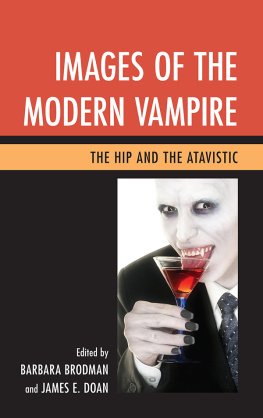
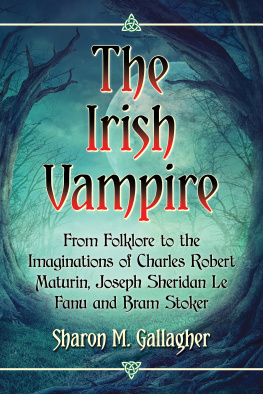
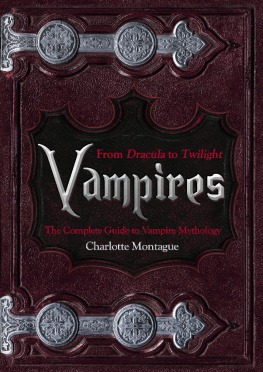
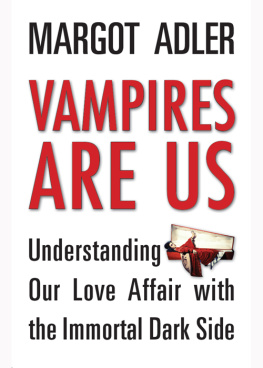

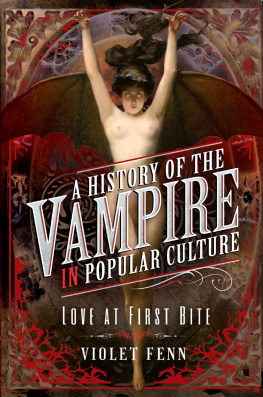
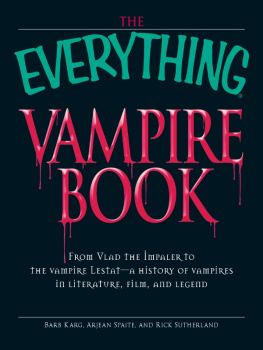
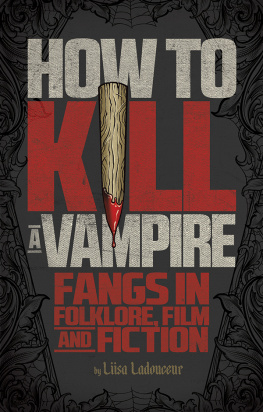
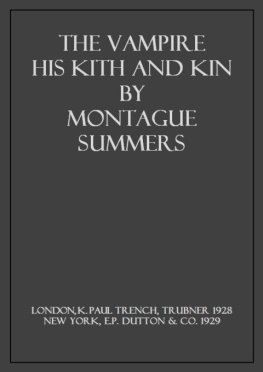

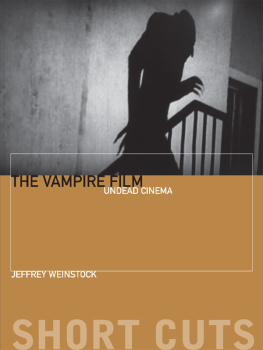


 The paper used in this publication meets the minimum requirements of American National Standard for Information SciencesPermanence of Paper for Printed Library Materials, ANSI/NISO Z39.48-1992.
The paper used in this publication meets the minimum requirements of American National Standard for Information SciencesPermanence of Paper for Printed Library Materials, ANSI/NISO Z39.48-1992.